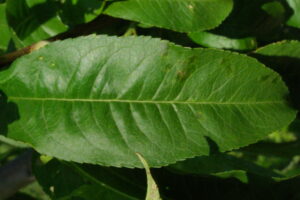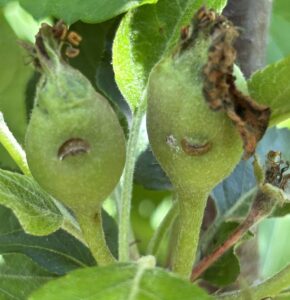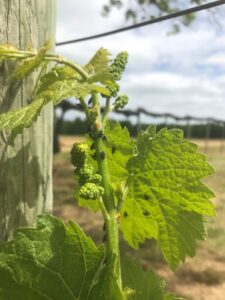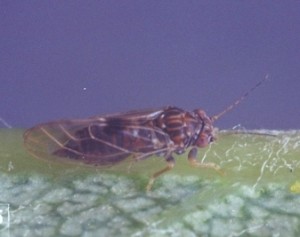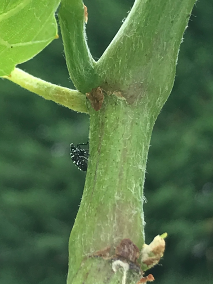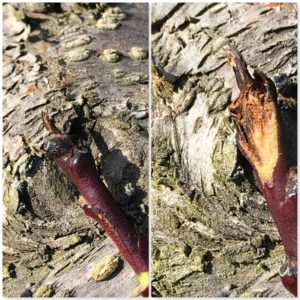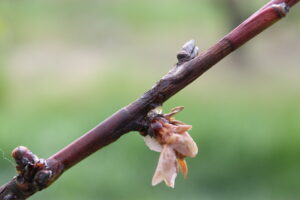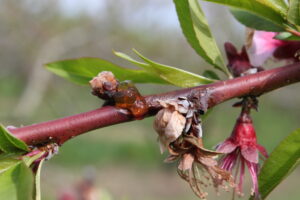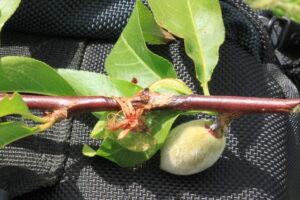New Jersey’s high deer population significantly threatens vineyards, particularly those near wooded areas. Deer are a pest, especially on young vines and in the early growing season when food sources are scarce, and tender shoots are emerging. If the vineyard is close to the deer population, management is needed for the long-term productivity of the vineyards.
Identifying the deer damage: Deer browse on leaves and tender shoots using the lower front teeth. Deer do not have upper incisors, so the leaves browsed by deer have a rough, torn, and shredded appearance but no tooth marks (Figure 1). This can cause substantial crop loss and even compromise the health of the vines, specifically if the same vine is damaged over the years (Figure 1). Fortunately, secondary buds of grapevines can grow and produce replacement shoots when the actively growing shoot tip from the primary bud is damaged. A new shoot from a basal bud may not be as productive, however, it will ensure new vegetative growth, sustaining the canopy of the grapevine. [Read more…]
